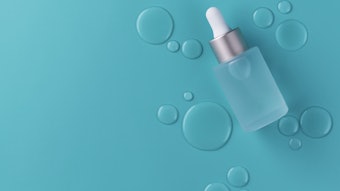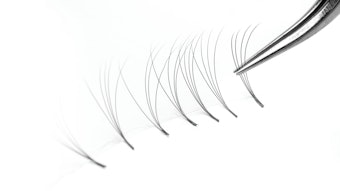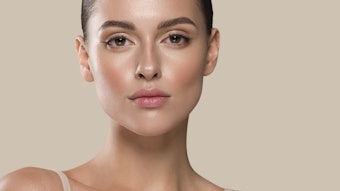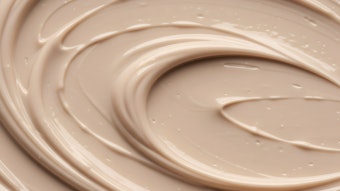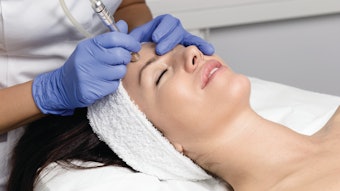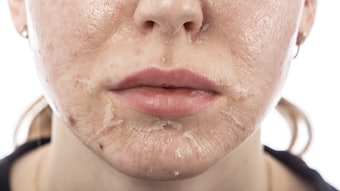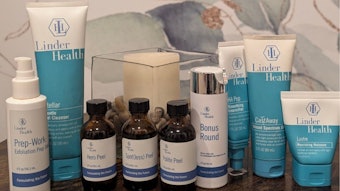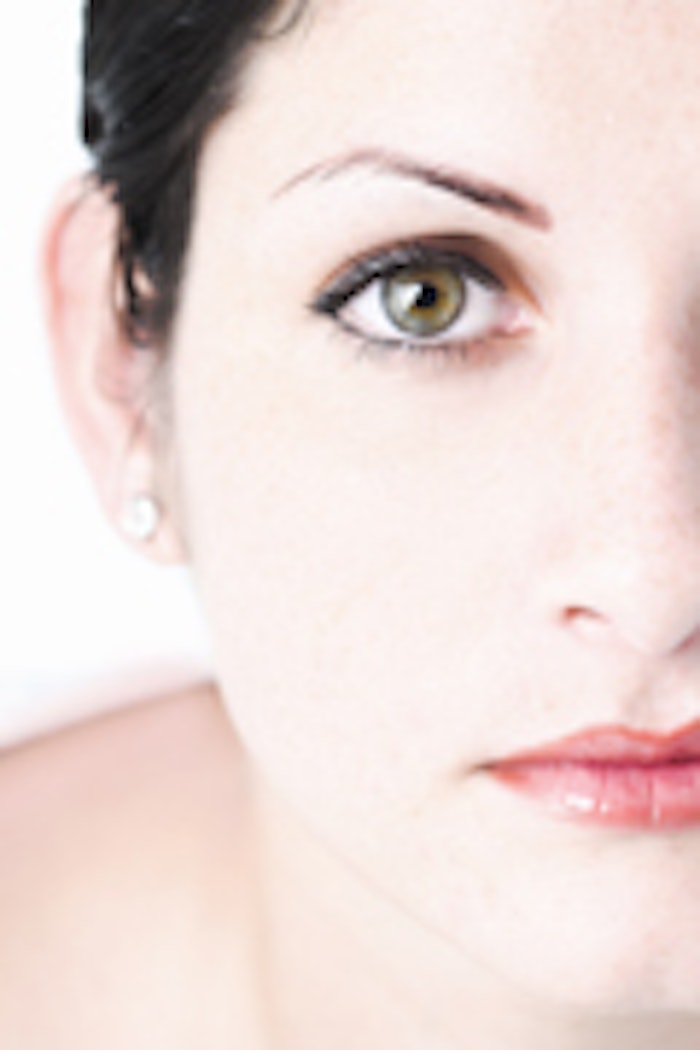
Anyone who complains about the size of her pores probably has clear skin, unsullied by blemishes, freckles, broken blood vessels, lines, or scars. But now, dermatologists are reporting an increase in just such complaints: "Make my pores smaller" is what Mary P. Lupo, professor of dermatology at Tulane University School of Medicine, hears more and more. "And patients are never completely satisfied, because there isn't a permanent solution." Lupo coined a term for the preoccupation: "porexia," or the search for impossibly small pores.
There is logic behind the sometimes irrational impulse. "Beauty is associated with perfect skin, and pores are a huge part of that equation," Lupo says. "When pores are tighter, light reflects better. You get an overall appearance of vitality, youthfulness, and health."
Genetics determine pore size, as do skin type and age. "If your skin is oily, and that oil gets trapped inside the pores, it oxidizes and turns dark," says Leslie Baumann, professor and director of cosmetic dermatology at the Miller School of Medicine at the University of Miami. And age factors into the equation because "over time—especially if you've had a lot of sun exposure in the past—you start to lose the collagen and elastin that support the pores," says Jeannette Graf, assistant clinical professor of dermatology at New York University Medical Center. "They begin to stretch and sag around the edges, which can make them look bigger."
While we can't shrink our pores with any permanency, the right skin-care products and treatments can help keep the skin clear and tight, making pores less noticeable. One of the most important things that doctors try to prescribe, however, is a reality check. "Pores are a vital part of the skin, and getting rid of them completely is impossible," Lupo says. "My best advice is to stop looking in the magnifying mirror. Why subject yourself to larger-than-life pores if you're the only one who can see them?"
Over-the-counter
Pore-minimizing products will help your pores look clearer—and therefore appear smaller—if you use them on a regular basis, Graf says. "But any effects are temporary — once you stop, your pores will go back to their old ways."
Cleansers
Exfoliation is key to a refined complexion. Cleansers containing a low concentration—.5 to 1%—of salicylic acid, which is a beta hydroxy acid, or BHA, or a moderate concentration—2.5 to 5%—of lactic or glycolic acid, which are alpha hydroxy acids, or AHAs, stimulate cell turnover and keep pores clean, Lupo says.
If your skin is very oily, Graf suggests switching to a cleanser that also contains the antioxidant Nordihydroguaiaretic acid, or NDGA. "There's proof that it maintains clear pores by preventing oil oxidation (an organic reaction with air that causes oil to darken, a.k.a. a blackhead) and reducing inflammation and excess sebum," she says.
And be sure everything you use is oil-free. "The idea is to get rid of oil, not add more," says New York City dermatologist Patricia Wexler.
Moisturizers
The moisturizer you use on large pores should be oil-free and contain the same ingredients as your cleanser, though you don't have to worry about finding one with NDGA, along with vitamin C or retinol. "These stimulate cell renewal and collagen production, which will firm up the connective tissue around the pores," Graf says. "Over time, they'll appear tighter and smaller." And don't ever skip sunscreen. "It should offer both UVA and UVB protection and have a minimum of SPF 15," she says.
Treatments
At-home masks and peels work over the long term. "You'll notice changes right away, but you should continue to use them weekly to maintain smaller-looking pores," Lupo says. She suggests a mask containing algae, which firms the skin, or clay, which absorbs oil.
And peels should pack in AHAs and BHAs. "It is perfectly safe to use a cleanser, moisturizer, and peel containing glycolic acid or salicylic acid, as long as you use the peel just once a week," Graf says.
Doctor's office
If your skin isn't responding to over-the-counter products, the problem may warrant more attention. "When a patient's pores are very clogged with blackheads and whiteheads, it's time for a doctor's visit," Graf says.
Products
"Prescription retinoid creams such as Tazarac, Retin-A, and Differin exfoliate pores and flush them of oil and buildup, which makes them appear smaller," Lupo says. "I prefer Tazarac because it is the most effective. Tazarac and Retin-A are also approved by the FDA to protect against the signs of photoaging, which contributes to the dilation of pores over time — it's like killing two birds with one stone."
Procedures
A round of treatments at the dermatologist's office is often the answer for women whose pores are so severely clogged that even prescriptions don't help. "For some, lasers, peels, and light treatments are most effective at minimizing pores," Graf says.
IPL (Intense Pulsed Light therapy) and LED (light-emitting diode) can make pores look smaller. "With both treatments, the light reaches deep into the skin and stimulates collagen production," Wexler says. "They're able to penetrate the deepest levels of the skin without harming the surface layer, and they're painless." IPL takes 15 to 30 minutes and starts at $300 a treatment, and three to five sessions are typically enough to make pores look tighter and smaller. LED takes about one minute, costs $60 to $150 per treatment, and generally requires at least eight rounds. "Once you find a treatment that works for you, smaller pores can be maintained with yearly visits," Lupo says.
Alternatively, "an in-office 20 to 30 percent salicylic-acid peel is one of the best ways to exfoliate the skin, and you'll see results right away," Lupo says. "I suggest combining it with an LED treatment. The peel exfoliates the skin, and the LED stimulates collagen. And there's no downtime," she says. The cost of a peel ranges from $150 to $300.
One of the newest machines, the Isolaz Lazr Deep Pore Therapy, combines a vacuum with a therapeutic light that's similar to IPL. It painlessly pulls out the bacteria, dead cells, and oil that are trapped inside the pore, finishing with a flash of light that is believed to kill bacteria and stimulate collagen. "It isn't widely available yet, but it is FDA approved, and the clinical results look great," Graf says.
For some, pores appear tighter after just one ten-minute treatment, although it takes three monthly sessions to garner full results. "It costs about $500 for one round," says Fredric Brandt, a dermatologist in New York City and Coral Gables, Florida, noting that a maintenance visit every three months is necessary. "It also has a cumulative effect—it can shrink pores considerably over time."
By Cara Litke, Allure magazine, January 30, 2008
